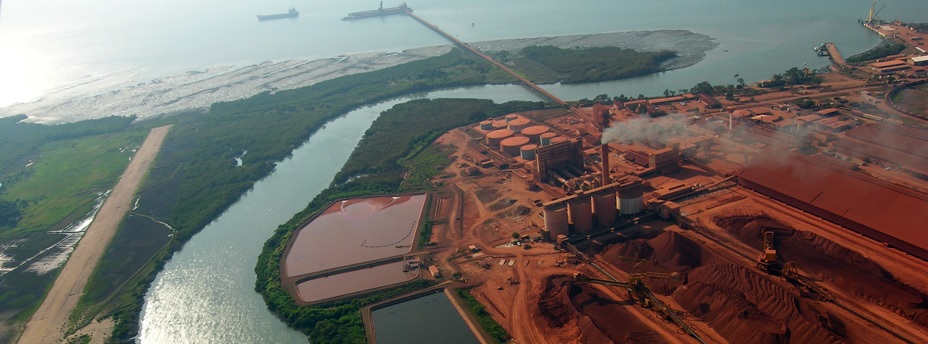Guinea coup: China’s bauxite conundrum?
Pivoting away from Australian bauxite is looking more and more unlikely.
According to worldatlas.com, Guinea is the 4th biggest exporter of bauxite, an alumnium ore. With 19.3 million metric tons produced annually, Guinea is also reputed to be the largest bauxite deposits in the world. (these numbers from worldatlas.com are outdated by the way ; but included for now just for context)
With the economic warfare waged against Australia in recent years with the breakdown in diplomatic relations, China turned to Guinea in a bid to pivot away from the largest producer of bauxite (Australia). In 2017, China agreed to loan 20 billion dollars over 20 years in exchange for concession on bauxite.
The loan will fund projects like the China Power Investment Corp’s alumina refinery, Aluminium Corp of China’s bauxite mine and China Henan International Cooperation Group’s bauxite project, all in the northwestern town of Boffa. Revenues generated from this projects will be used to repay the loan to China.
On top of that, the China loan will also include the funding of roads in the capital and highways, extension of the port of Conakry, an electric transmission line and the building of a university.
It was a great business deal for China to secure a stead supply of the aluminum ore with a relatively small “investment”, to starve off Australia further in the great geopolitical battle in the Asia Pacific. And with Guinea’s largest deposit of bauxite in the world, a poor country that is in need of financial injection and investments – it looks like China had hit the jackpot – like many other deals China had in Africa.
However, the military coup came out of nowhere, and here stands a new “king” in Guinea, Mamady Doumbouya. And there is no saying if he will honor the deals from the government he overthrown.

Read more about it here: http://defensepoliticsasia.com/npr-guineas-military-declared-a-coup-what-happens-next-is-uncertain/
Mamady Doumbouya, by all accounts, seemed to be a rather “western-influenced” individual. Married to a French national, the popular coup leader is internationally exposed, trained in France and served in the French military’s foreign legion, participated in peacekeeping and international missions around the world (including Afghanistan, Ivory Coast, Israel, UK, Cyprus, Djibouti, Central African Republic, etc..), done specialist training in Israel, and elite military training in Senegal, Gabon and France.
The trigger for the coup, also seemed to be due to President Alpha Condé’s insidious intention to use the Special Forces Group (GFS) that is led by Mamady for repressive purposes – possibly the hidden reason why Condé wanted to form the GFS at the first place – to strengthen his grip on power – and he got the best possible candidate to head it – Mamady himself. However Mamady seemed to be more “righteous” than Condé expected.

China had been importing more and more bauxite over the past few years. from 2016, the year before the deal is signed with Guinea, to 2020, the import volume of bauxite had doubled from 52.05 million metric tons to 111.59 million metric tons (214% increase). This is on top of the 47 million metric tons produced locally in China annually. China was the 2nd largest producer of bauxite in the world.

According to a report by SCMP, Guinea’s bauxite represents 47% of the total imports into China. In 2020, Guinea produced 82 million tonnes of bauxite, placing Guinea firmly in the 2nd spot behind Australia’s estimated 110 million tonnes (according to the United States Geological Survey).
With the increase from worldatlas.com’s 19.3 million metric tonnes to the latest estimates of 82 million metric tonnes, Guinea is on track to continue to grow its production capacity further (thanks to the Chinese investments/companies) to allow China to reduce it’s reliance on Australian imports. A strategy China had employed across all industries against its western “friend-nemies” and adversaries, including soybean that we had covered a few years ago (Read more: Why China imports soybeans from the US?)

While Guinea’s production and export of bauxite had not seemed to be affected by the military coup yet, analysts are predicting potential disruptions and is already floating the possibility of China importing more from Australia to cover any supply shortage.
This would definitely throw a wrench in the geopolitical chess game China is currently playing and spells the conundrum that China faces – the inability to be self-sufficient and entirely detach from the “western adversaries and US-led world order”, or to even hold these “evil imperialists” to ransom (something China had been trying to do with Australia).

